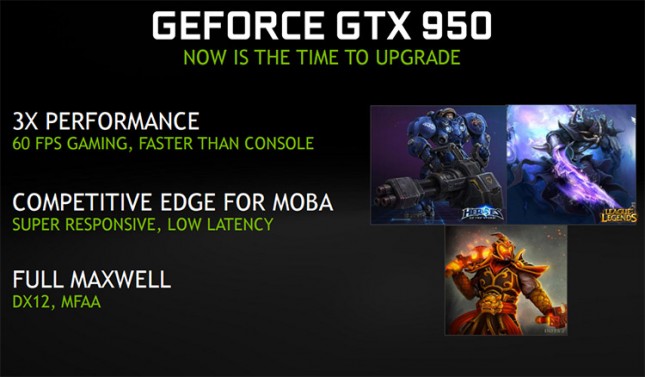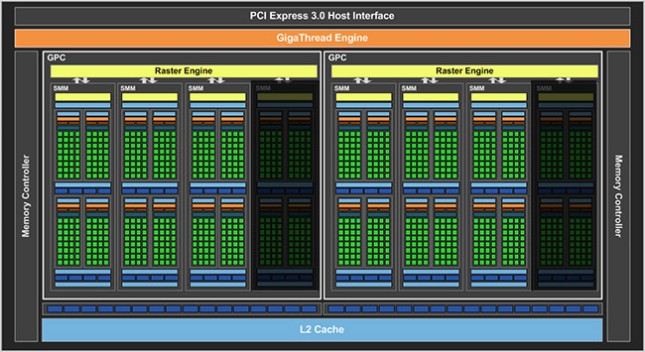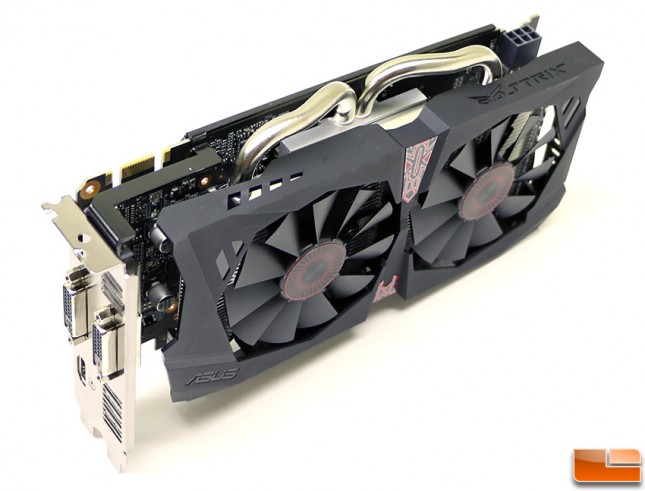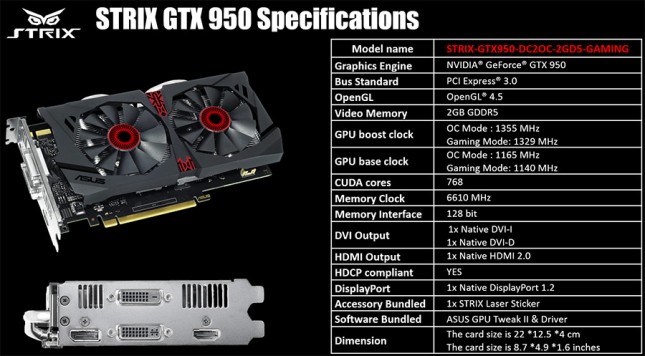NVIDIA GeForce GTX 950 2GB Video Card Review – ASUS STRIX GTX 950
NVIDIA GeForce GTX 950 2GB Review
NVIDIA today launched their latest mainstream graphics card, the GeForce GTX 950, which features a suggested retail price of $159 and uses the GM206 Maxwell GPU. That GPU might sound familiar to those that keep up with the graphics card market as it is the same exact GPU that NVIDIA is using on the GeForce GTX 960 ($199). NVIDIA disabled some things to help differentiate this card from the GeForce GTX 960 and was able to bring it to market at a lower price point.
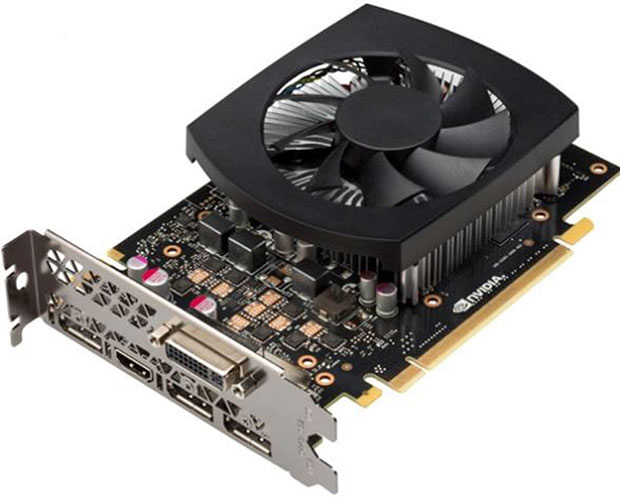
For this card NVIDIA is targeting it to the millions of gamers around the world that play MOBA (Massive Online Battle Arena) game titles like DOTA 2, Heroes of the Storm and League of Legends. MOBA game titles have seen explosive growth over the past several years yet only modest system hardware is needed to play those game titles. There are tons of gamers out there with 3+ year old video cards playing these game titles and NVIDIA is looking to get those people to update their system to one of these new cards. With the recent release of Windows 10 and DirectX 12 there are likely a good number of gamers out there that are looking for a more powerful graphics card that is more power efficient, quieter and supports all the latest features like DX12.
let’s take a quick look at our specifications table to see what is different on the GeForce GTX 950 since it uses the same basic GM206 GPU as the GeForce GTX 960.
| GTX 960 | GTX 950 | GTX 650 Ti | GTX 650 | |
|---|---|---|---|---|
| GPU | GM206 | GM206 | GK106 | GK107 |
| Die size (mm2) | 227 | 227 | 221 | 118 |
| GPU Cores | 1024 | 768 | 768 | 384 |
| SMX Units | 8 | 6 | 4 | 2 |
| GPU Clusters | 2 | 2 | 2/3 | 4 |
| Base Clock (CUDA Cores) | 1127 MHz | 1024 MHz | 928 MHz | 1058 MHz |
| Boost Clock (CUDA Cores) | 1178 MHz | 1188 MHz | N/A | N/A |
| Texture Units | 64 | 48 | 64 | 32 |
| ROP Units | 32 | 32 | 16 | 16 |
| Memory | 2GB | 2GB | 1GB | 1GB |
| Memory Clock | 7000 MHz | 6600 MHz | 5400 MHz | 5000 MHz |
| Memory Interface | 128-bit | 128-bit | 128-bit | 128-bit |
| Memory Bandwidth | 112.0 GB/s | 105.6 GB/s | 86.4 GB/s | 80.0 GB/s |
| TDP | 120 watts | 90 watts | 110 watts | 64 watts |
| Peak Compute | 2.30 TFLOPS | 1.57 TFLOPS | 1.43 TFLOPS | |
| Transistor Count | 2.94B | 2.94B | 2.54B | 1.3B |
| Process Tech | 28nm Maxwell | 28nm Maxwell | 28nm Kepler | 28nm Kepler |
| MSRP | $199 | $159 | $149 | $110 |
NVIDIA disabled two SMX units and this resulted in the number of CUDA cores dropping from 1024 to 768. This is a 33% decrease in the number of CUDA cores. NVIDIA also reduced the number of texture units from 64 to 48, which is a 25% reduction.
NVIDIA left the memory configuration alone, so you still have a 128-bit bus although it’s clocked at 6600 MHz instead of 7000 MHz. This reduces the memory bandwidth to 105.6 GB/s from 112.0 GB/s. NVIDIA also reduced the base/boost clock speeds as the base clock is 1024 MHz and the typical boost clock is 1188 MHz. The end result of all this is a card with 1.57 TFLOPS of compute power versus 2.30 TFLOPS on the GTX 960 reference card.
We wouldn’t get too hung up about base/boost clock speeds though as the NVIDIA reference card was just for internal testing and for the add-in board partners to use to come up with their own designs. We’ve seen cards from ASUS, EVGA, MSI, Zotac, Gigabyte and others that all come with much higher overclocks from the factory. The card that we are looking at today is the ASUS STRIX GTX 950 and it features a base clock of 1165 MHz with a boost clock of 1355 MHz right out of the box!
Let’s take a closer look at the ASUS STRIX GTX 950 video card and then jump into looking at how it performs!

